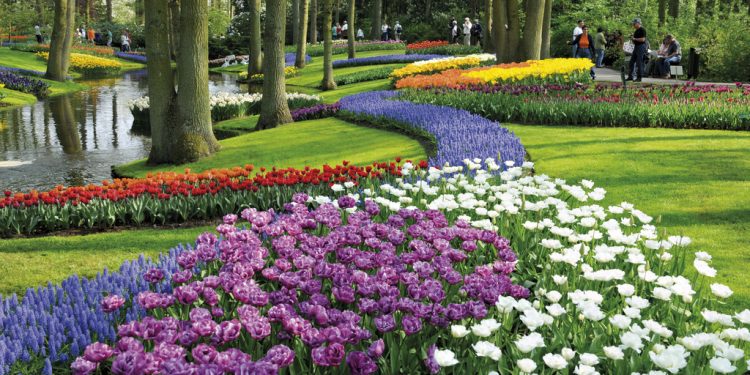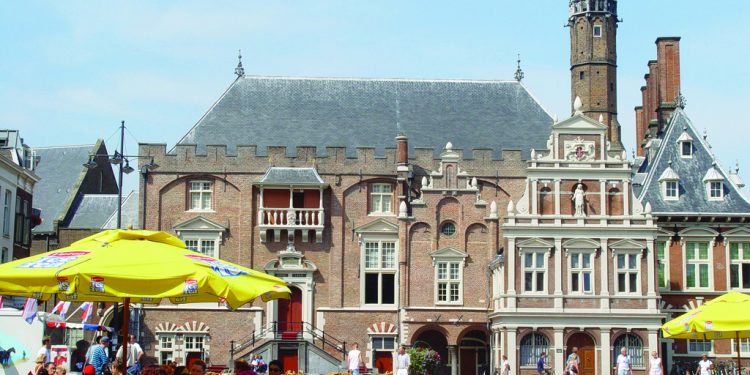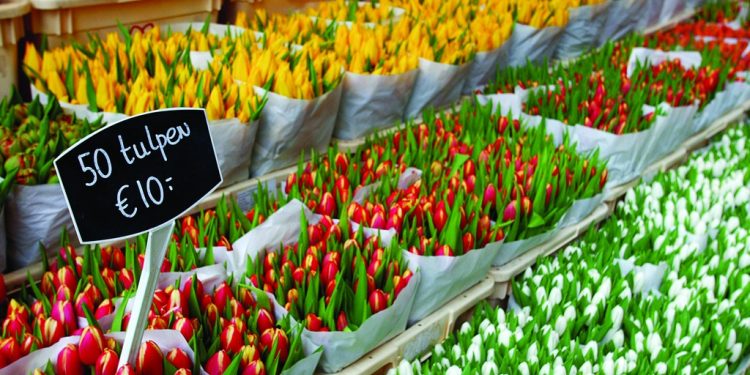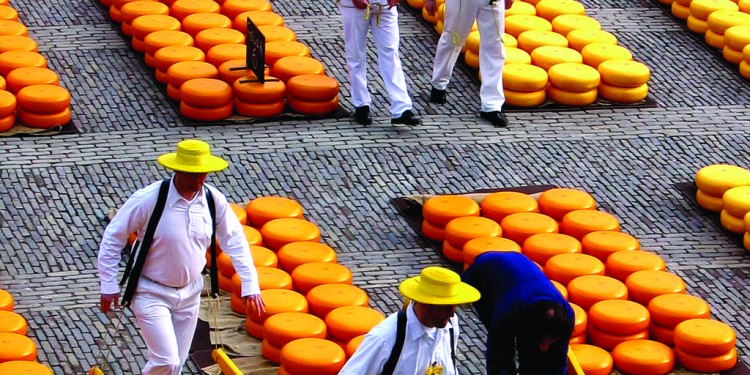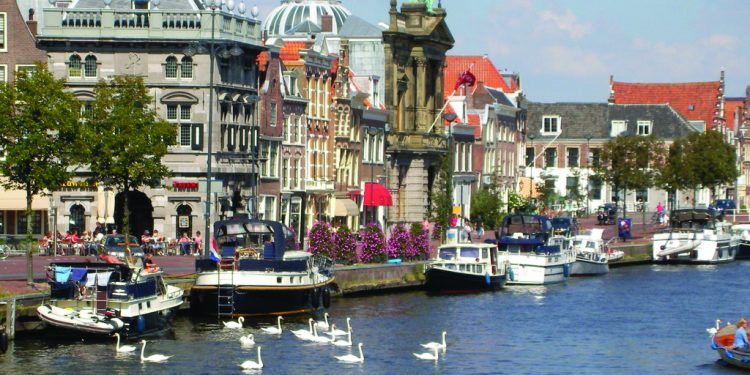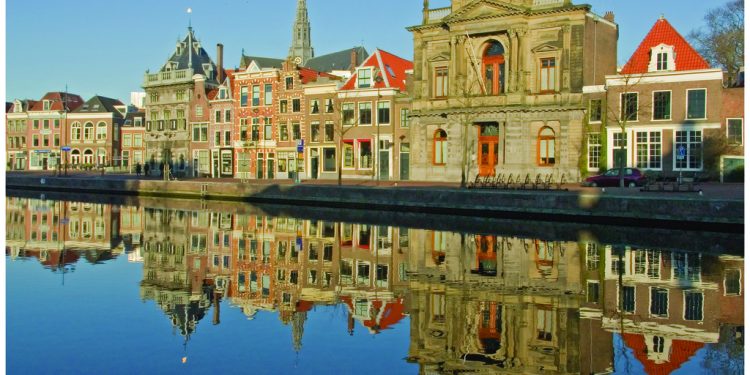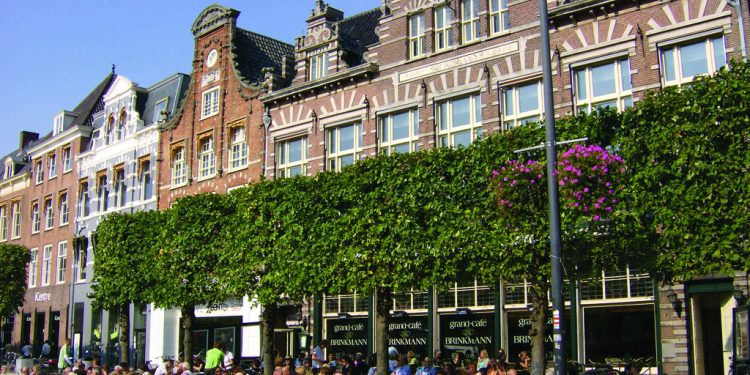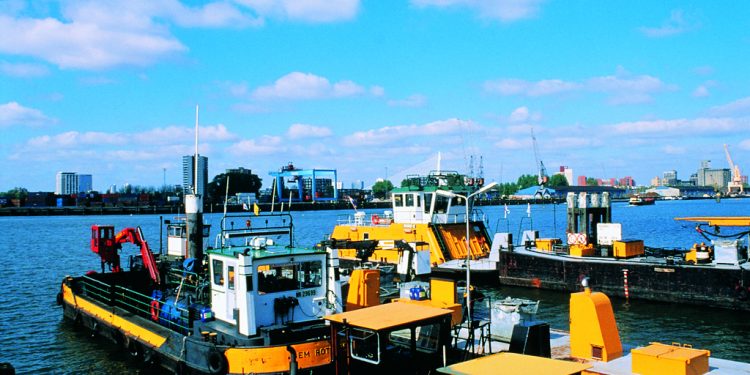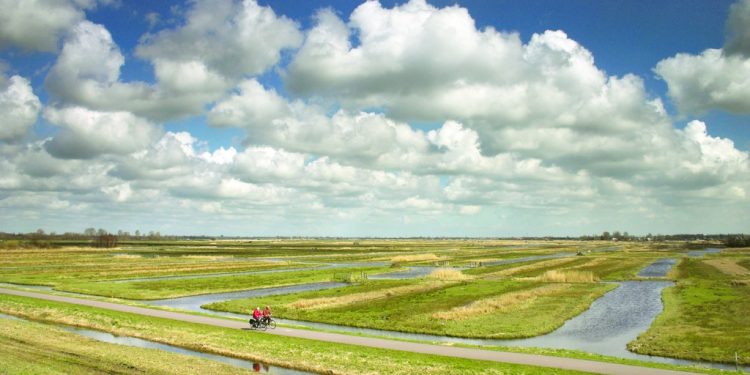The Netherlands in the spring with the tulip fields in full bloom are an amazing experience
Venture into the stunning countryside of The Netherlands in spring when the blooming tulips reach their peak, discover enchanting villages and wonderful gardens along the way.
The article continues below.
By Adriana Alcina Pictures: Mediabank Holland, Mediaserver NBTC Holland
Every year the Danish calendar brings an array of spring bank holidays and they are a great opportunity to embark on a short trip.
If you are looking for a tranquil and laid-back destination, with scenic routes and little quaint towns, immerse yourself into the Netherlands’ postcard-like scenery.
For most people, the idea of Dutch landscapes evokes pictures of windmills, colourful tulip fields, clog-wearing farmers, flat pasturelands, and endless canals.
The Dutch countryside comprises all these images and more, and its compact size makes it a convenient destination for a long weekend.
For the best flower viewing opportunities, travel between the end of March to the middle of May, as this is the time when their famous tulips begin to flourish and transform the Dutch fields into a colourful patchwork.
“The Tulip fields are absolutely stunning during this season,” says Lone Vaerndal, a Dane who has been living in Holland for the past 30 years.”Tulips are a typical Dutch symbol, bringing a bouquet is a popular and inexpensive local tradition,” she adds.
The article continues below.
THE “GARDEN OF EUROPE”
Lone recommends visiting the famous Keukenhof Park. This 32-hectare historical park started out as the small kitchen garden of a 15th-century countess (in fact, its name means “kitchen garden”), and evolved into the largest flower garden in Europe and one of the country’s most popular sights.
With more than seven million tulips, daffodils, hyacinths and all the other spring bulbs, it is easy to let your senses dazzle with the bright colours and perfumed scents.
Located in Lisse, near Leiden, the garden is open only for eight weeks in the spring.
The garden features plenty of interesting activities and events, including flower-arranging demonstrations, flower shows, and floral markets.
Across from the garden’s entrance lies the tower-ringed Castle Keukenhof, built during the Dutch Golden Age. This beautifully preserved manor house is one of the few remaining country estates on the West Coast region.
The article continues below.
OTHER PLACES TO VISIT
The capital of North Holland, Haarlem, is also an excellent place to visit, and is less than a 30- minute drive from Lisse. Also known as, “the flower city”, Haarlem is considered the historical center of the tulip bulb-growing district.
The city is famous for its many hofjes (charitable houses built around courtyards) and its variety of museums, such as the art and science museum, Teylers, the country’s first and oldest museum, and the Frans Hals museum, dedicated to the famous Dutch painter.
If you happen to be visiting the Netherlands when they have their annual flower parade, which runs along the 40-km route from Noordwijk to Haarlem, it is a beautiful event to enjoy.
The Bloemencorso Flower Parade rides through the different cities of Voorhout, Sassenheim, Lisse, Hillegom, Bennebroek, Heemstede to arrive in the city of Haarlem as night falls.
Another great area full of colourful flower fields is the “head of North Holland” or Kop van Noord-Holland.
This primarily agricultural region is home to the largest connected bulb flower fields’ network in the Netherlands, and it also features beautiful beaches and a series of picturesque, historical towns.
Take the N9 scenic route (which runs parallel to the North Holland Canal) and you will traverse landscapes full of charming windmills, beautiful thatched-roof farmhouses, and massive fields of flowers.
Make a stop at the bohemian town of Bergen, famous for its traditional Dutch houses and the dune nature reserve, Schoorlse Duinen. On your way back, visit the popular cheese market of Alkmaar, an excellent display of delicious cheese, delightful medieval décors and vendors dressed in traditional costumes.
Cycling is undoubtedly the best way to see the colourful tulip bulbs bloom.
Signposted routes mostly follow bicycle lanes, and they will guide you through the most interesting and off the beaten track places.
Hiking and kayaking are also fun ways to explore the splendid Dutch countryside.
A quieter alternative is to hop on a cruise down the North Holland Canal. For tailor-made tours, check Private Holland Tours.
The article continues below.
Getting there
Driving to the Kop van Noord-Holland region takes approximately eight hours from Copenhagen, Aarhus, or Esbjerg.
Another possibility is to fly to Amsterdam and then catch a train (there are direct flights with several airlines from Copenhagen Airport).
Local trains stop at several touristy locations such as Alkmaar and Haarlem, while buses reach most of the small villages along the coast.
There are no direct trains between Denmark and the Netherlands, and the journey takes a minimum of 14 hours.
The article continues below.
“Tulip Mania”
Tulips were originally cultivated in the Ottoman Empire and were imported to Holland in the 16th century.
The Botanist Carolus Clusius first planted them in Dutch soil in 1593. Tulips require well-drained, moist soil to bloom, and Carolus Clusius quickly realised that they could thrive in the cool and humid Dutch climate. This was the beginning of a prosperous flower industry, and farmers began to turn the lowland fields into the now iconic colourful flower display.
During the Dutch Golden age in the mid-17th century, the popularity of tulips led to the first economic bubble, known as “Tulip Mania”. As people began to buy thousands of tulip bulbs, prices rapidly escalated and they became a form of currency, which later lead to a serious economic crisis.
FUN FACTS ABOUT THE NETHERLANDS AND PLANTS…
75 percent of the world’s flower bulb production comes from the Netherlands, who produce as many as four billion bulbs annually. Over half of them are grown into cut flowers. FloraHolland is the largest flower auction in the world. Over 20 million flowers and plants are sold every day at its six locations in the Netherlands.
For the fourth consecutive year, the Netherlands is the world’s biggest exporter (in value) of fresh vegetables.
The country is also the world’s top producer of onions. Horticulture accounts for 39 percent of Dutch agricultural production.
Support our magazine with a contribution of any size
We do not want to put up a pay-wall, so we need your support and if you find our content relevant and worthwhile, we would value any contribution, however big or small, as a token of your appreciation of our efforts.
How to support:
Transfer any contribution to our bank account at: Your Danish Life/ Danish Expat Media Aps
Danske Bank Account number: 3409 11405673
IBAN: DK68 3000 0011 4056 73
or MobilePay to 2144 1224
Message: Support


